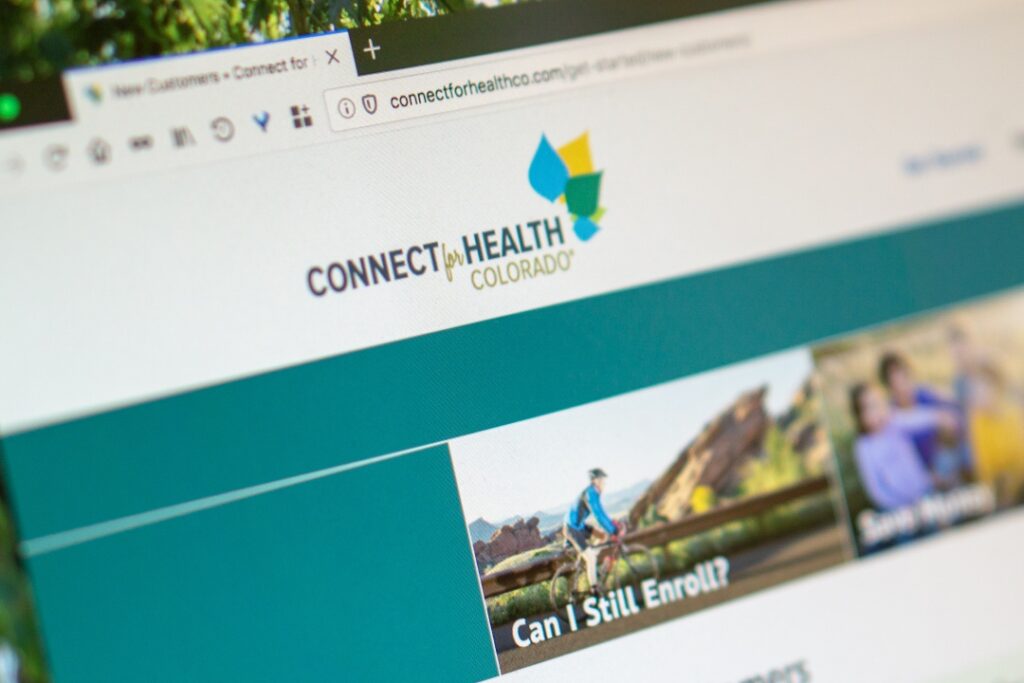Colorado health insurance prices set to jump next year — at least for some

Health insurance prices for many Coloradans could rise by as much as 11% next year, the largest jump in five years.
That’s the bad news in preliminary rate filings released Tuesday by the Colorado Division of Insurance. The filings are for plans sold in the small group and individual markets — the places where small companies and people who shop for insurance on their own purchase coverage.
But state regulators also see a silver lining. Prices for the new Colorado Option, the quasi-public health insurance program that promises better benefits at lower costs, will largely hit their goals, according to the preliminary filings.
In nearly every county, rates for the Colorado Option will be below the countywide average price in each of the three levels of coverage — gold, silver and bronze.
In addition, the Colorado Option does not appear to have sent insurers headed for the exits en masse. Instead, people in every county but one will see at least two choices for insurers on the state’s insurance exchange when open enrollment starts up in the fall. In Jackson County, there will be only one choice, same as this year.
“I am a firm believer that good regulation actually incentivizes companies to play in the marketplace, and I think you’re going to see that with the Colorado Option,” Michael Conway, Colorado’s insurance commissioner, said.
Oscar Health — which last year covered about 3,800 people in the state, all along the Front Range — will not return to offer plans in Colorado in 2023. Its leaders cited unspecified regulatory challenges in announcing plans to pull out of Colorado, as well as Arkansas, in 2023. Both were small markets for the company, and its CEO said Oscar wants to focus on markets “where we can win.”
Here’s a few other things to know about Tuesday’s release:
The price increases could have been a lot higher
Colorado has what is known as a reinsurance program — a system where the state helps health insurance companies in the individual market pay their highest-cost claims. That allows the insurers to lower their prices for everyone.
Conway’s team estimates that, without reinsurance, Colorado would be looking at premium price increases above 30%.
As it is, the 11.3% average increase for the individual market is the largest since 2018, when prices jumped 27%. The biggest increases will likely be seen on the Eastern Plains and Western Slope, where insurers are proposing an average increase for individual market premiums of 21% and 19.2%, respectively.
Bright Health and Friday Health Plans are proposing the largest increases — 21% and 24.2%, respectively. Kaiser Permanente is not proposing an increase for its individual-market plans.
In the small group market, premiums are expected to increase statewide by an average of 9.2%.
The fate of federal subsidies is still unknown
Exactly what this means for how much health insurance will cost people next year is a stupefyingly complicated question.
Base premium rates vary based on the level of the plan, the county where you live, what age you are and whether you smoke. To get to what you actually pay involves more number-crunching related to how much you earn and how much you are eligible for in federal subsidies.

And this year, there is another variable: whether Congress will continue the enhanced premium subsidies put in place during the pandemic. (The federal government offers subsidies to certain people shopping in the individual market, based on income, to help them pay their premiums. The American Rescue Plan supercharged these subsidies, expanding them to include more people.)
If Congress does not extend the enhanced subsidies, 13 million Americans could see what they pay for health insurance increase next year. In Colorado, about 25,000 more people are receiving a subsidy this year than in 2021, though how many of those will end up paying more if the subsidies are not extended can often come down to highly specific circumstances.
What happens to Colorado Option plans that didn’t hit the target?
The Colorado Option is a health insurance plan designed by state regulators but sold by private insurance companies in the individual and small group markets. It was built to be more generous for primary care and mental health benefits and more equitable, while also costing less.
To meet that last goal, state law sets a target: Colorado Option plans have to be priced 5% below what an insurer charged in a given county in 2021, adjusting for inflation. On Tuesday, Conway said he projects at least 87% of people shopping in the individual market will have access to at least one Colorado Option plan that hits the target.

But what does that mean for the number of Colorado Option plans that don’t meet the 5% goal? Conway didn’t provide a number, saying the state is still evaluating it. In the future, insurers whose Colorado Option plans don’t meet the savings targets will be hauled in for a public rate hearing, after which regulators could potentially step in and start setting hospital prices to drive the cost of the plans down.
But Conway said that won’t happen for the 2023 rates. Those hearings still could take place next year, but they would only be focused on the prices for 2024 insurance plans.
Consumer advocates vow to fight for lower rates
The Colorado Consumer Health Initiative, an advocacy organization that is the state’s most vocal in pushing for lower health insurance prices, slammed the proposed rates Tuesday, suggesting that insurers and hospitals “may be using inflation as an excuse to drive up rates.”
“Even as reinsurance keeps premiums for Coloradans down, and as we see more companies offer plans in more counties, health insurance continues to be unaffordable for too many Coloradans,” Mannat Singh, CCHI’s executive director, said in a statement. “Premium rates must be reasonable and justified; the industry shouldn’t use the ongoing pandemic or inflation to hike company profits.”
In a statement, Amanda Massey, the executive director of the Colorado Association of Health Plans, an insurer trade group, said insurers had to juggle a number of competing interests to come up with next year’s prices.
“The preliminary 2023 rate filings reflect the hard work of the industry to increase the quality, affordability and access of health insurance for Colorado consumers while ensuring actuarially sound rates in a time of high inflation,” she said.
You can make your voice heard
State regulators will take the next couple of months to review the proposed rates and decide whether to approve them or order changes. Final rates for 2023 should be released by the end of summer or early fall.
Until Aug. 1, the public is able to submit comments on the rates. Go to the Division of Insurance’s website for more information on how to dig into the rate filings and submit a comment.

We believe vital information needs to be seen by the people impacted, whether it’s a public health crisis, investigative reporting or keeping lawmakers accountable. This reporting depends on support from readers like you.
This content was originally published here.




Responses